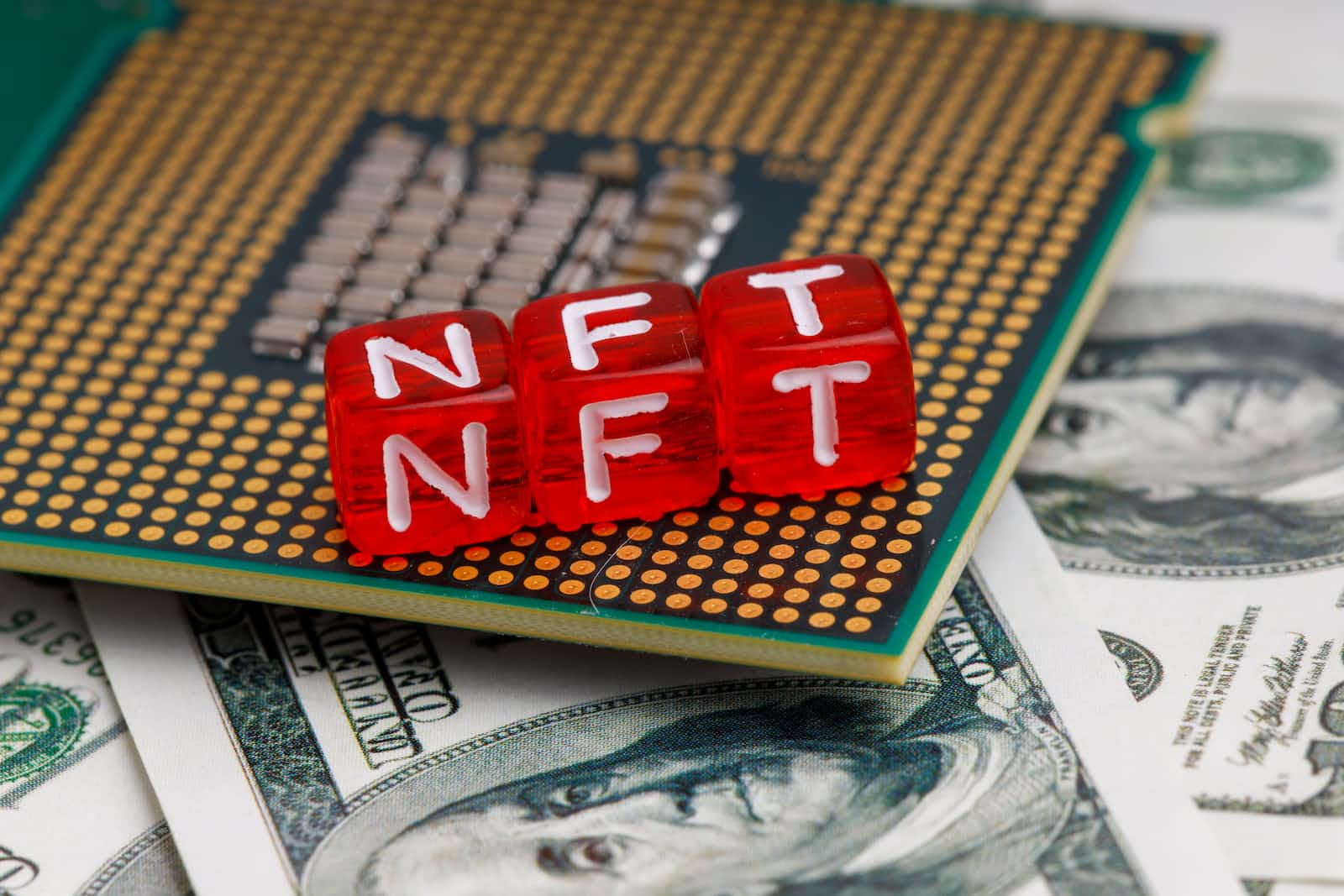NFT Whitelist: How It Works, The Benefits, And The Dark Sides
 John Fáwọlé
John Fáwọlé
After a good number of NFT artists such as Beeple made ground-breaking sales last year. The whistle has been blown and thousands of creators have rushed into the booming NFT industry.
With time, the industry also recorded an inflow of projects such as Bored Ape, cloned, Azuki, and Degods creating NFT-centred communities. Apart from the peculiar value propositions of these projects, the collectors can also flip the collectibles for cash.
Flipping NFTs can be so profitable, especially when you have bought them at a low price. If you are whitelisted, for instance, you can mint an NFT with 0.001 SOL and later flip it for as high as 10 SOL or even more.
Seeing the profitability of gaining whitelist spots, it has become a trend in the NFT space. But in this short piece, we will go beyond the surface of whitelisting and have deeper conversations on some of the hidden truths behind it.
What does NFT whitelisting even mean?
To carry everyone along, we must not assume that everyone understands what a whitelist is all about, or what it means to be whitelisted. Therefore, let’s create a common pedestal of understanding.
Let's digress a little, have you ever seen premieres? If not, no pressure. Read on. In real life, top-rated movies are not always released for public consumption immediately or at once.
Instead, there used to be a premiere for the movie to be shown to some special sets of people before it finally goes public. With that understanding, let’s come back to NFTs:
An NFT whitelist always contains the number of a selected few who will have the preferential privilege of minting an NFT way before the actual launch of the project.
Thus, to be whitelisted simply means that one is on this list.
Once you are eligible for a whitelist spot, you will be required to supply your wallet address—depending on the blockchain where the NFT project is built—so you will be added to the database of those who have early access.
Since your wallet address has been approved, you along with the other selected few will be able to mint during the private mint. You can be able to mint one, two, or unlimited NFTs depending on the smart contract of the NFT project.
Once you have minted these NFTs as a result of being whitelisted, you can go ahead to list them for higher prices and trade them off at the secondary market.
There are countless stories of how people make thousands—or even millions—of dollars by gaining whitelist spots. Getting whitelist spots can be lucrative, right?
If you want to get into the game, then you need to know how to secure these spots.
This Is How To Secure NFT Whitelist Spots
On a Discord of over 5,000 people, it might be the case that only 600 will be whitelisted. That sends a signal that whitelisting is not automatic – you have to work for it.
Even when you’re working for it, there are still some cogent points to note so your efforts can be recognized and appreciated by adding you to the database.
Generally, here is how you can secure whitelist spots on your preferred NFT projects.
Look For New NFT Projects
This is where it all starts. You need to scout and identify projects that you find promising. Of course, these must be projects that have not yet been launched.
You can check these websites to know the vibrant NFT projects that are yet to launch. Not only that, you'll be able to see whether or not these projects are offering WL spots.
Here you go:
When you get to these websites, look for any project that suits your taste. If you have favorite blockchains, you can filter to see upcoming NFT projects that are built on them.
Once you have identified a few projects of your choice, then it’s time to do a little bit of research. Check up on each particular project on Twitter and the reputation of the team behind it.
Notice the caliber of people following the projects too. After doing your background check, then you can hop into their community which would usually be on Discord.
That leads to the next step.
Grind In Their Communities
For those who are not yet familiar with the NFT world, "grinding" is slang that means being up and doing in the community. The practice of seeking to get enlisted into the whitelist is known as "grinding."
Having said that, grinding differs among projects; the requirements for gaining whitelist spots are not fixed, they are pretty flexible and they depend on each project.
How do you then know the whitelist requirements of any project?
There is always a channel on most NFT Discord servers where the whitelisting activities are spelled out. Otherwise, you can simply hop into the server and ask the moderators. Usually, whitelist requirements often roam around:
- Being active 24/7 on Discord
- Retweeting and tagging people to the project’s tweets
- Referral
- Brilliant contributions to the growth of the project
Perhaps you want to know more about grinding, read this thread.
Why Do Projects Often Offer Whitelist Spots?
We have had a swelling discussion on what you stand to gain if you are whitelisted for a project. How about looking at it from another perspective as well?
Most NFT projects today always embrace the whitelisting method in their business models. Indeed, there are three solid reasons NFT projects offer WL spots:
To Reward Loyal Community Members
At its core, building a vibrant NFT community is hard because you'll need the commitment of a lot of people. These people must believe in your project and push it to the limelight.
Such that when you call for AMA or Twitter Spaces to discuss the growth of the project, you'll always see these people.
Meanwhile, the fact that there are 3,000 on an NFT Discord server doesn't mean all of them have the interest of the project at heart – which is normal.
But for the set of people who are passionate about shipping the project to the moon, what will be their rewards?
Among other things, being whitelisted is a way of incentivizing vibrant community members for their commitments.
To Minimize Minting Traffic
Perhaps you don’t know the meaning of a gas war, this is it:
When a great number of people are trying to mint from a collection at a time, the demand would be more than the blockchain’s throughput can process, therefore, there would be traffic.
During this traffic, the number of gas fees will keep spiking such that the community members who are trying to mint will be outbidding themselves of gas. Eventually, this is always perceived as wasteful.
Earlier this year, Yuga Labs held a public mint of its Otherside—a Metaverse NFT project—and over $150 million was wasted during the gas war. This generated a lot of reactions as there was a fierce competition during minting and each of them had to spend a lot of money on gas fees.
This is a problem that whitelisting solves easily. Since some handpicked people can mint before everyone else, there is the likelihood that there won't be any congestion during public mint.
To Ensure Maximum Fairness
To a large extent, minting can be unfair, and it might not even be the fault of the core team.
During minting, some often make use of bots. This helps them to mint faster and more than anyone else. Such that others who have been passionate and supportive of the project might miss out on minting little or nothing at all.
With whitelisting, bots are shoved off. The addresses that will mint would have already been approved.
Moving on, some people can also mint most of the collectibles in a collection so they can manipulate the market; to pump and dump them. This is also known as wash trading. But since a lot of people are whitelisted, such manipulation is difficult.
The Hidden Truth About NFT Whitelisting
No doubt, whitelisting is fast becoming a common and natural practice in the NFT space, such that most projects adopt it. But there is more to it than meets the eye. Thus, let’s examine a couple of uncomfortable truths:
As A Grinder, Whitelisting Doesn’t Automatically Translate To Making Money
There are always discussions around how to win whitelist spots and this often sends a subliminal message that WL is equal to making money. That is not entirely correct.
As we explained earlier, whitelisting means that you'll be able to mint at a free or relatively lower price than anyone else.
Now, the money-making aspect of it is when you list it for a higher price and someone eventually buys it. In other words, no one may place a bid to buy your NFT at a secondary sale.
Apart from that, most mints always require funds even though you’re whitelisted. For instance, the mint price of Azuki was 1.9 SOL.
If it were to be the case that you don’t have the liquidity, that means there is no way for you to mint. Fortunately, it's now practiced in the NFT space where those who have WL spots team up with those who have liquidity and both parties share the profit.
As A Founder, NFT Whitelisting Can Serve As A Drawback To Your Project
Currently, the NFT space is filled with projects where the major interest of most community members is profitability of projects. To be clearer, the main reason most people hustle for WL spots is mainly for the essence of trading it.
Now, what does this mean for you as a founder?
You will agree that the utility of NFTs is beyond flipping, and we are approaching a season whereby only the NFTs with real-time value will fly.
If you want to solve a real-world problem with your NFT project, then you need people who are passionate about what you’re building, not just people who want to make money.
By not providing an option for a whitelist, you will know those who are serious about the value propositions early, and you will know the number of people that you are working with.
Wrapping Up - But What If I Don’t Get Whitelisted?
Making whitelist spots is a great way to turbocharge your journey as an NFT degen. For sure, it won't be an easy journey. Moreso, you might grind hard for a WL and not eventually get shortlisted. But all in all, it’s an interesting adventure that is worth it.
At this juncture, we can say that you can still make giant strides in the NFT space even if you are not whitelisted in projects. In fact, not everyone will even have the luxury of time to grind in the first place.
That is why there is a secondary sale. You can simply buy one from someone who minted during the private mint and later flip it later on.
Subscribe to my newsletter
Read articles from John Fáwọlé directly inside your inbox. Subscribe to the newsletter, and don't miss out.
Written by

John Fáwọlé
John Fáwọlé
Web3 Technical Writer | Content Lead | Marketing Strategist | For Devs